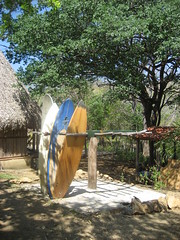Winter is finally upon us in the Berkshires. Now is the time to take some preventative measures to insure a healthy winter. There are many ways to incorporate health building foods into a home cooked meal. Here are my top five, must eat foods for winter health and the best part is that combined, they make a delightful, one bowl meal.
- Bone broth + harmony
If you add one thing to your winter routine, start drinking a hot cup of bone broth. Why? Because it’s a collagen building, infection fighting, inflammation reducing wunder food. Just heat up and get cozy with your favorite mug and you are ready to go. We make our own, but you can also pick up bone broth at your local butcher shop. If you’d like to make your own, I recommend “How To Make Bone Broth” on WellnessMama.com, it’s full of resources. For the amount of broth we get, it’s definitely worth the effort!
- Mushrooms: we all love a fungi!
What goes great with bone broth and keeping your immune system strong and fortified against the winter chill? Mushrooms! Maitake and shiitake are two flavorful varieties that are readily available fresh or dried. Maitake, aka “Hen-of-the-Woods”, is my personal favorite. Add them dried to your broth for extra flavor and an immune boost. A plateful of fresh maitake mushrooms sauteed in butter with a little salt and black pepper is sublime. Add a perfectly fried over easy egg and it’s dinner.
- Get fermented: foods that are good for your gut
Fermented foods introduce good bacteria and balance existing bacteria in your digestive system. Miso is a fermented superfood and it’s nutty umami depth adds the right amount of salty flavor to simple bone broth. Mix it in after the broth has been heated and plated. I’m a fan of Chickpea Miso by South River Miso. Other great for your gut and immune health fermented foods include yogurt, unsweetened Fire Cider and lacto-fermented veggies — Hosta Hill sauerkraut and kimchi are staples at our house.
- Stay warm
Ginger offers anti-inflammatory, antiviral, antifungal and antibacterial properties. A warming spice, you can add it to soups, cookies, hot teas and broth. Grated fresh ginger in hot water with lemon is a soothing way to fight germs and mend a sore throat.
- Get your greens
It’s cold and dark outside so be sure to keep your mind and body bright with daily doses of green veggies. They are full of the vitamins and minerals you need to stay healthy and balanced, so make slow cooked collards or give saag paneer a try. Plate up a quick salad to go with your bowl of broth for a balanced meal of both raw, cooling food and warming, cooked food.
Best of all, you can combine these five super ingredients into one dish in about 15 minutes, with only 5 minutes of active time, for one satisfying meal. For someone who frequently skips lunch, I’ll consider this recipe my new year’s resolution.
Mushroom Miso Broth – 2 servings
Ingredients:
- a small handful (about ⅓ cup) of dried maitake and/or shiitake mushrooms , chopped small, stems removed. Keep in mind they will expand 2-3 times during cooking.
- about 1 teaspoon or so of dried powdered ginger
- two cups or more bone broth, unsalted or lightly salted is best since the miso will add all the salt you will need!.
- shredded napa cabbage or kale, about a ½ cup or less should do.
- Miso to taste – use traditional soy miso or experiment with other flavors.
In a pot combine the dried mushrooms, powdered ginger and bone broth. Add a lid and bring to a boil.
Turn down the heat and simmer on low for 10-15 minutes or until the mushrooms are fully hydrated.
Turn off the heat and add a small handful or less shredded napa cabbage or kale.
When the greens are bright green, serve in two bowls.
Add your favorite miso to each bowl, I like about a tablespoon, or more. Serve with a side of kimchi and enjoy in good health!



















